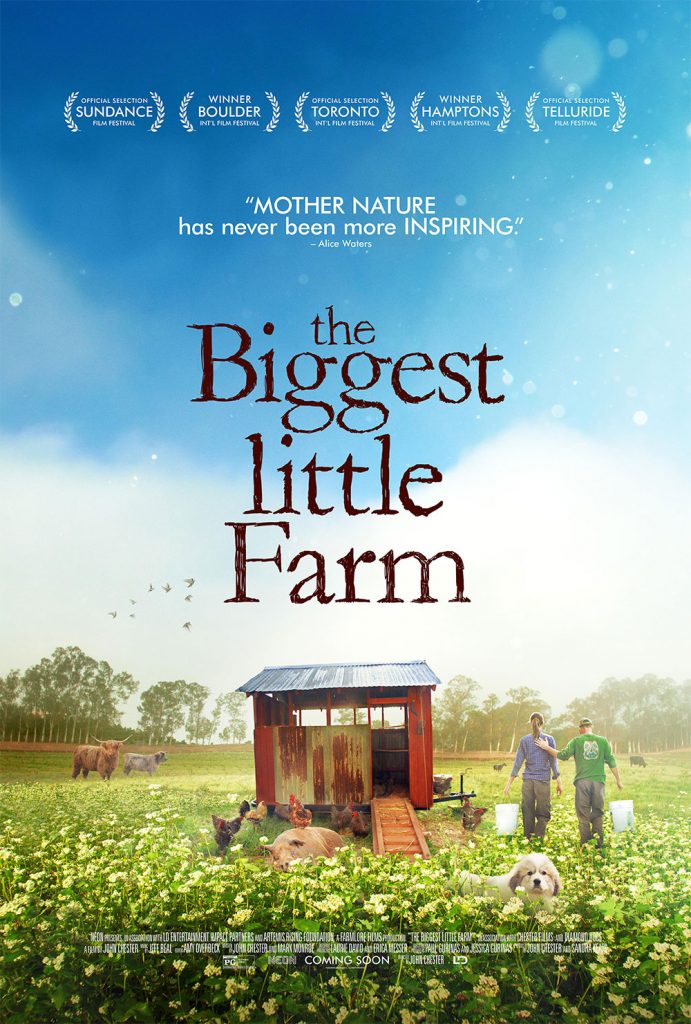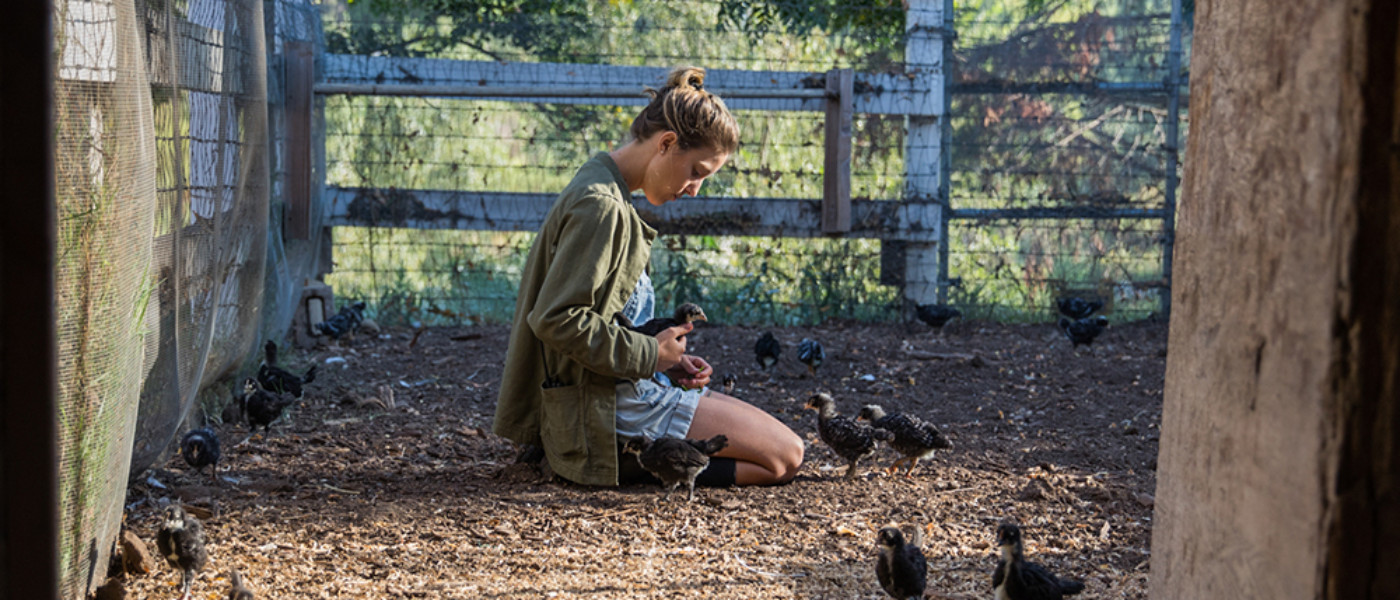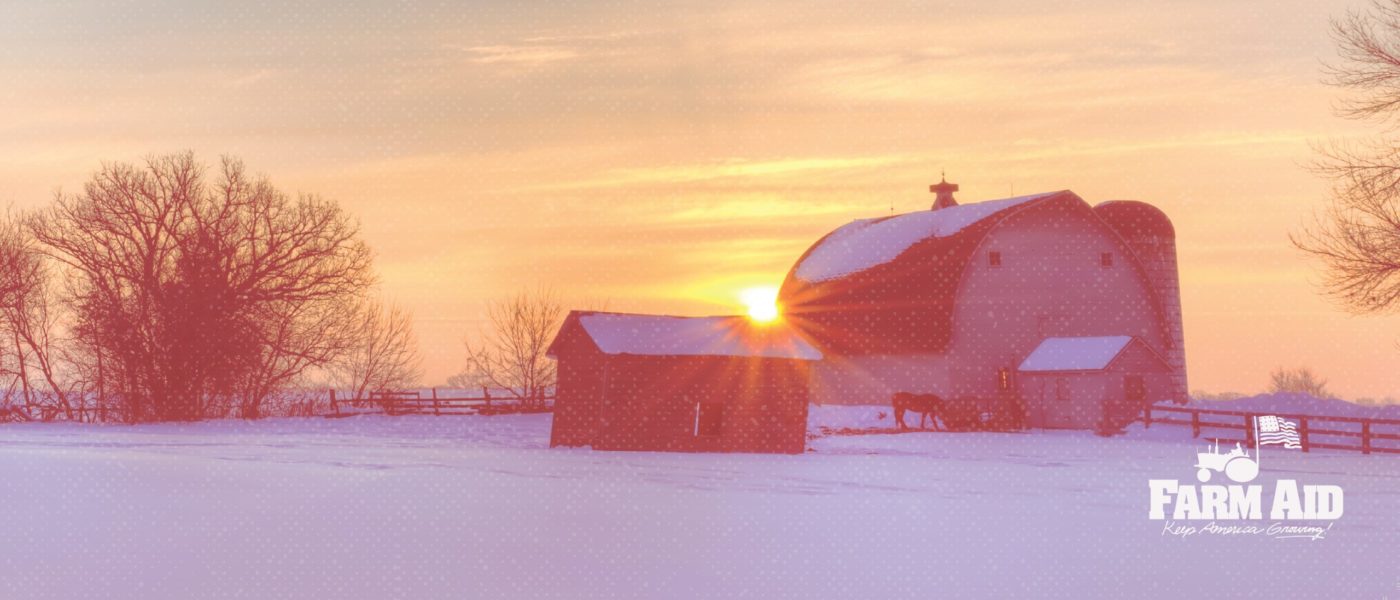Farm Aid was lucky to get a sneak peek at The Biggest Little Farm, a new feature film coming to theaters on May 10. The Biggest Little Farm chronicles the eight-year quest of John and Molly Chester as they pour their hearts and souls into revitalizing 200 acres of barren farmland and fulfill a dream to harvest in harmony with nature.

First things first: John and Molly are in the enviable position of having an investor/investors to help make their seemingly impossible vision reality. While the film chronicles the challenges that all farmers are likely to face—from broken irrigation pipes and natural disasters to entire chicken flocks lost to predators—there is no coverage of the devastating financial impact from these disasters, each of which has the potential to wipe out a new farm. On the contrary, at one point John explains that in the first six months of farming, they’ve already spent their entire first year budget! For those of us focused on farmer livelihood and who know all too well the reality of the slim margins that farming allows (sometimes, if at all), it’s a challenge to suspend judgment about that point. But if you’re able to let yourself forget about the financial logistics and root for their experiment of farming with nature, you can enjoy the fruits of their labor. After all, if we could all be in that position, we’d all be farmers! Or at least that’s what we think—watching the daily hurdles the Chesters face might make us think otherwise.
The film is gorgeous, with incredible cinematography that brings viewers up close and personal with the farm animals.
But back to the fruits of their labor: They are impressive (just ask the starlings that decimate their peach crop)! The film shows the dry—frankly, dead—soil that John and Molly start with. They can’t even get a shovel into it. Theirs is a farm that has seen many owners, some of them banks who had foreclosed on past owners—and none of them caretakers, clearly. But with their biodynamic farming expert mentor and friend, Alan York, Molly and John are in good hands. Alan knows and preaches that the way to a healthy farm is through healthy soil, which also has the power to retain water and sequester carbon from the atmosphere, mitigating climate change. In fact, when it is healthy, soil is the best tool we have to store carbon. Across the globe, soil stores around 3,000 billion metric tons of carbon! Alan brings a whole team to help, including pigs, goats, sheep, chickens, ducks, guinea hens, horses and highland cattle that graze and fertilize, incorporating their manure into the soil with each step, increasing organic matter and soil nutrients that feed the plants. The film is gorgeous, with incredible cinematography that brings viewers up close and personal with the farm animals (many of whom are truly characters!) and wildlife that comes to their farm as they rebuild it from the ground up.
Unlike other feature films about agriculture and food, The Biggest Little Farm isn’t here to expose the dark side of our food system or sell a specific kind of diet while wagging a finger at us. As John put it in a recent interview, “I feared that a film about a farm working in harmony with nature would be expected to be a polarizing essay of right and wrong. The acceptable villain of the story a human, a corporation or greed, leaving the audience with anxiety and rage, narrowing their perspective not widening it. After eight years I’ve discovered that a wider lens is the best way to interpret the language of an ecosystem that functions based on two things: consequence and impermanence.” The refreshing approach of The Biggest Little Farm is to show us what is possible through regenerative agriculture and that wider lens, as John puts it. As we all struggle with the divisions among us created by the food movement—and society as a whole—this film is an inspiring examination of BIG systems thinking. In this case, of farming with nature, seeing a purpose for every so-called pest or predator along the way. But there are lessons in it for life, too, I think.
In this clip from the film, bees signal their approval of the changes taking place on the farm:
Over eight years, The Biggest Little Farm documents how Apricot Lane Farms grows and thrives, confronting incredible challenges each step of the way. It’s the kind of situation nearly every farmer can only dream about, but John and Molly make the best possible use of it. Apricot Lane Farms, with its pastures and livestock, Biodynamic Certified orchards with more than 75 varieties of stone fruit, and lush vegetable garden, is a breathtaking vision of what our agriculture could—and should—be.
Watch the trailer for the film below:
Learn more about The Biggest Little Farm


